Typhoon Gaemi is the worst Typhoon to hit Taiwan in nearly a decade. It caused five deaths in Taiwan, dumped over a meter of rain in the mountains, and caused work and school to close for over three days in some areas. In this blog, I will detail some of the major events and overall situation in Taiwan during the Typhoon, as well as my own experience during this typhoon and past typhoons in Taiwan.
Basic Summary of the Typhoon 台風凱米大概的狀況
Typhoon Gaemi began forming as a tropical depression on July 22nd, strengthened to a super Typhoon, and finally made landfall in Taiwan on July 25th, 2024. Its highest winds reached 165 km/h, making it a category 4 Typhoon (very strong Typhoon or Super Typhoon). When it made landfall in Yilan, Taiwan, it was a category 3 Typhoon. As of the time of writing, the typhoon has caused over 27 fatalities and 502 injuries throughout the Philippines, Japan, Taiwan, and China, with five deaths in Taiwan. Most of these people were killed by falling objects, while one man was killed by a landslide (which is why you should stay indoors and out of the mountains during a typhoon). All domestic flights and hundreds of international flights in Taiwan were canceled. Most mountain villages in Taiwan were evacuated. Much of Taiwan was flooded along the Chianan Plain where over 500 mm of rain fell in a day. As of the time of writing, Maolin District of Kaohsiung received the most rain, with over 1900 mm of rain (6 feet) over three days.
In addition, agricultural losses totaled NT 1.8 billion.

The Typhoon was seen in forecast models over a week in advance, and as you can see the models were pretty accurate.
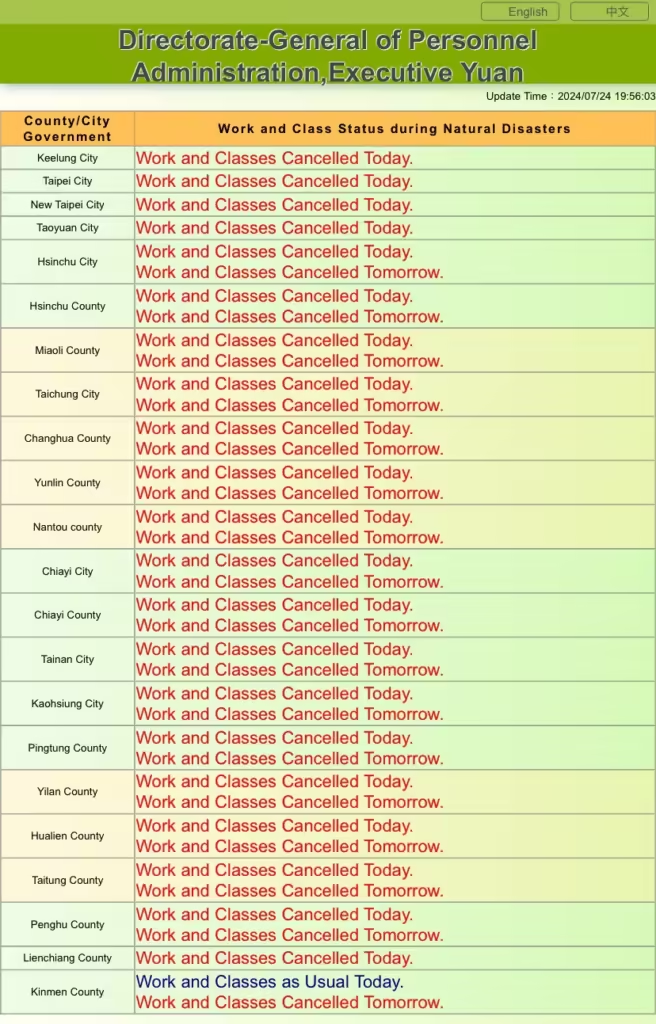
Work and school were canceled for at least two days everywhere in Taiwan, and in southern counties where there was flooding (Yunlin to Pingtung) three days of work and school were canceled.
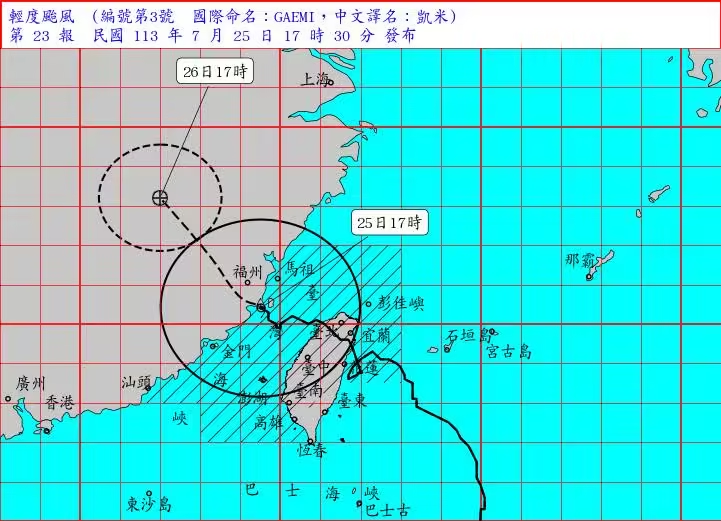
Overall the typhoon took a southwest turn from its original trajectory, making a loopdey-loop off the coast of Hualien before curving back up north and making landfall in Yilan and exiting Taiwan in Taoyuan.

“There is actually a pattern of typhoons “deflecting” off the mountainous coast of Taiwan due to orographic blocking, causing an asymmetric flow over the center of the cyclone. This phenomenon is well-documented and is explained better in depth in this paper published in May 2018: On Typhoon Track Deflections near the East Coast of Taiwan.“
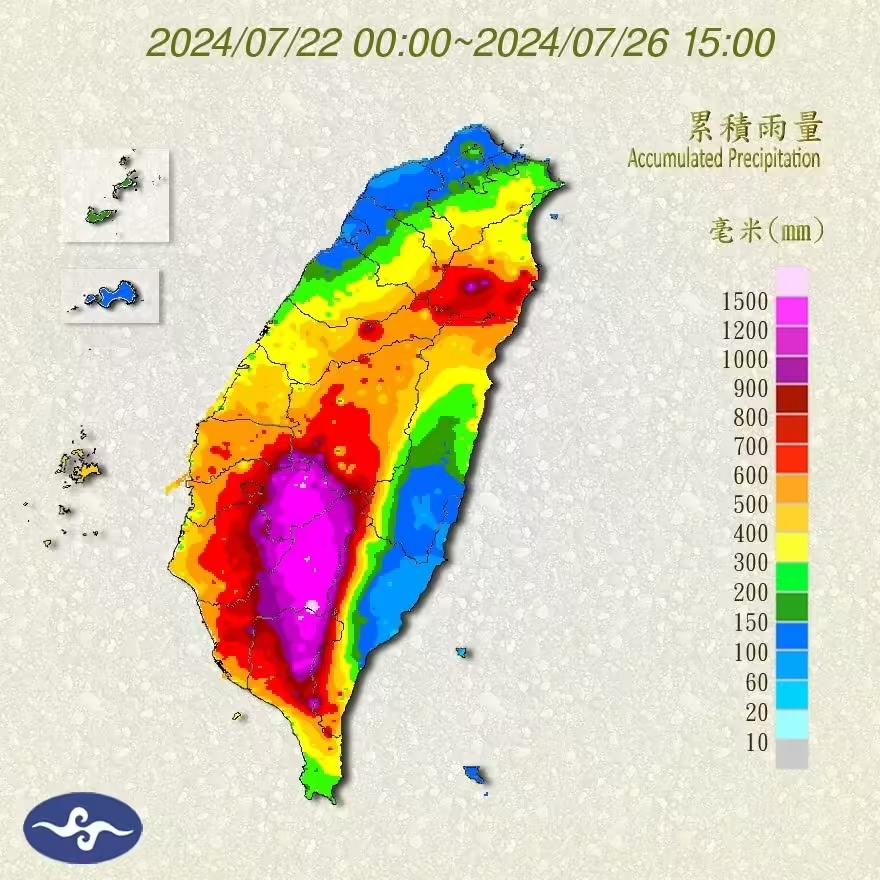
Maolin District of Kaohsiung now holds the rainfall record during the past three days in the wake of Typhoon Gaemi with over 1800 mm, which is 1.8 meters, or six feet, taller than the average person. This is less than Typhoon Morakot, which rained 2,600 mm over Pingtung. I thought that this Typhoon might be just as bad as Typhoon Morakot, but luckily there was much less damage and destruction.
The main reason for the massive rainfall is the southeasterly stream of wet air in the Typhoon’s tail that rammed into the southern Central Mountain Range. See the video below for a visualization.
My Experience in Taipei 我在台北的經驗
Ever since Super Typhoon Nepartak in 2016, which was the last major Typhoon to hit Taiwan, I have been fascinated with the epic destruction that these storms can bring. Typhoon Nepartak was the last Super Typhoon to make landfall in Taiwan. At the time I was living in Niaosong District of Kaohsiung. There was flooding, and we lost electricity for three days (and therefore water, because water could not be pumped to our building). Many streets were inundated with water, Chengqing Road was flooded, and nearly every tree in Chengqing Lake Park was stripped bare. Later I also visited Kenting and Xiaoliuqiu which had also received damage from Nepartak and Super Typhoon Meranti also. For photos of the damage at that time, check out our blogs to Chengqing Lake Park here, Kenting here, and Xiaoliuqiu here. I have always been awed and amazed by the immense destructive power that these storms create.
Other notable Typhoons since Nepartak include Nesat and Haikui, but because these did not become super Typhoons and did not cause major island-wide damage, they will not be covered in this blog.
Originally I planned to take a flight to Kinmen on July 24th with my family to enjoy a vacation there. When I saw that the typhoon was headed toward Taipei, I changed the plane ride to a day earlier to make sure that we could make it there. At the time, it seemed Kinmen would not be affected by the Typhoon. However, with the Typhoon storm radius expanding to over 250 km, Taipei came closer to the Typhoon sooner than I expected, and in the end, my flight was canceled.
The cancellation of the flight really ticked me off, because there were no more available flights for at least a week and I had to cancel my hotel and rental car. Looking back though, it was a good thing because Kinmen canceled school and work for two days, so we would not have been able to do anything in Kinmen anyway. Thousands of tourists were stranded in Kinmen, Matsu, and Penghu, with many of their return flights canceled. Many of them waited in the airport for days for a standby flight to no avail. In the end, the army had to send a few cargo flights to get them back to the main island of Taiwan. I would say if you see a typhoon coming imminently it is best to change your plans and cancel the trip for another time.
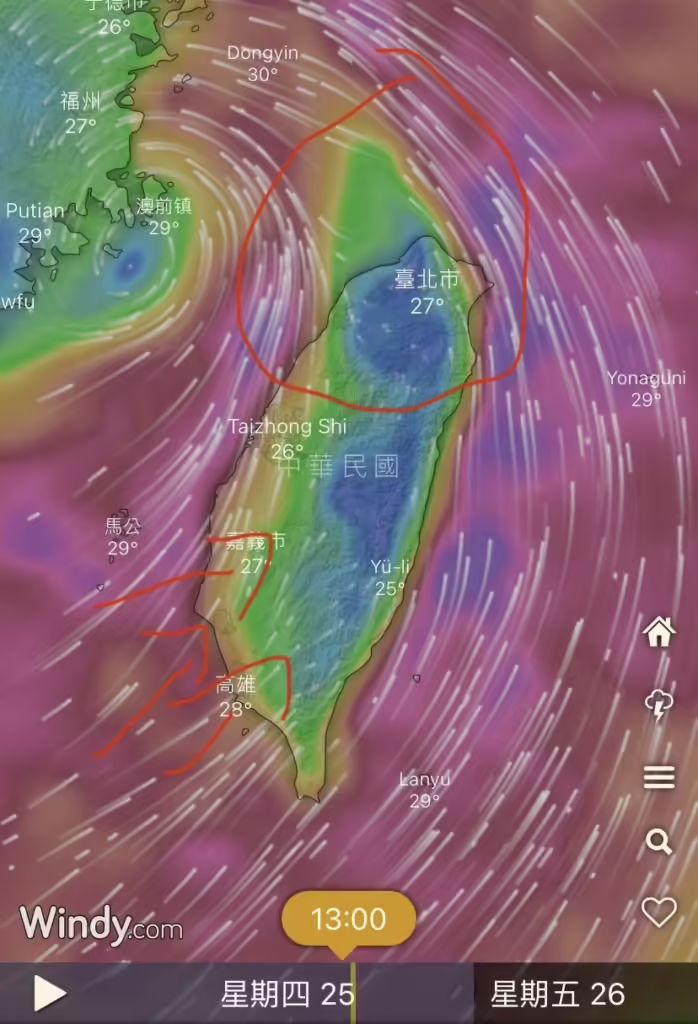
Taipei was calm for most of the Typhoon, with the central mountain range blocking winds from the south. Meanwhile, torrential rain was pouring down on southern Taiwan causing flooding all along the western coastal plain.
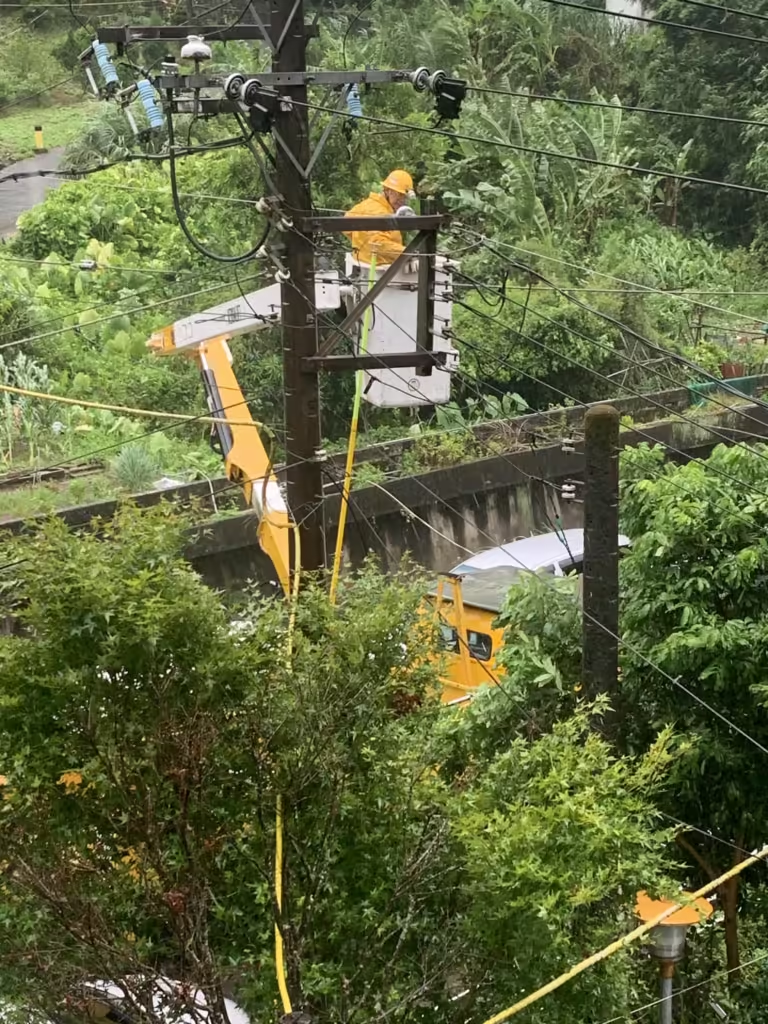
The power went off at my house for a few hours. This was a local problem in Nangang, but you can expect similar things to happen around Taiwan during a Typhoon. I was without power for 3 days during Nepartak. Thanks to the Taipower workers who came to fix the problem during the Typhoon, I could watch TV at home and have A/C.
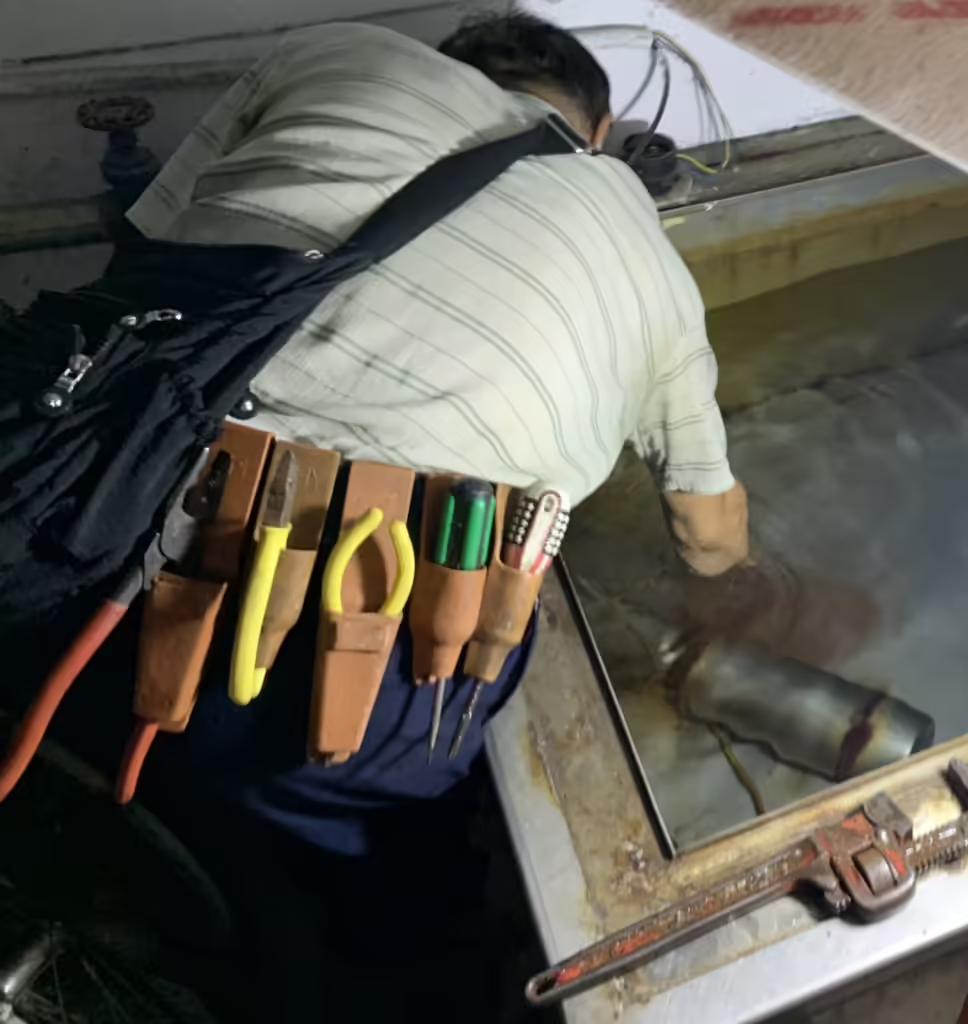
Later on, because of the power outage, our building’s water pump broke, and we only found out right as our water was running out. Thanks to the plumber who braved typhoon day to fix the water. It was not as bad as during Typhoon Nepartak when I didn’t have water or electricity for three days in Kaohsiung.
The worst part of the Typhoon in Taipei came Wednesday afternoon. I had never seen such heavy rain in the capital. But it did not last very long. By 4 PM, the rain had turned into a moderate drizzle with only light gusts at my house and calmed down more and more as time went on. We had school and work off for two days, which is almost unheard of in my experience.
Impact Around Taiwan 台灣其他地區的影響
Below are some videos and photos compiled around Taiwan to give you an idea of the Typhoon’s impact.
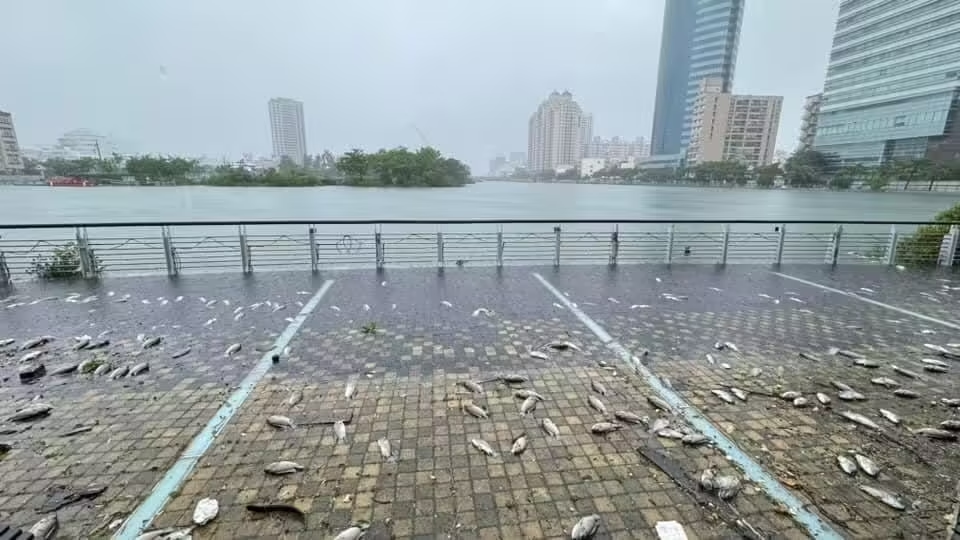
Now that the floodwaters are receding there are tons of fish on the streets. Seen from Anping, Tainan.
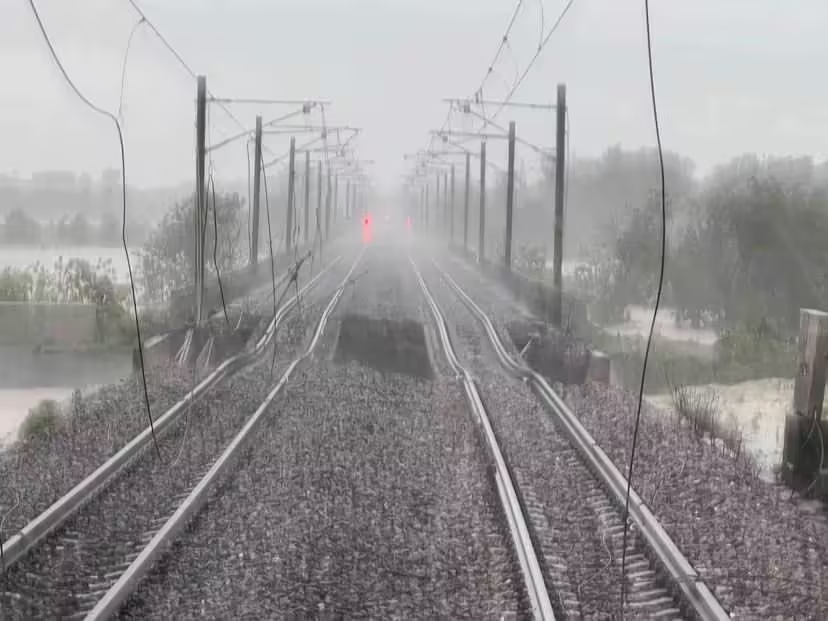
Another TRA bridge washed away in rural Tainan near Houbi 後壁.
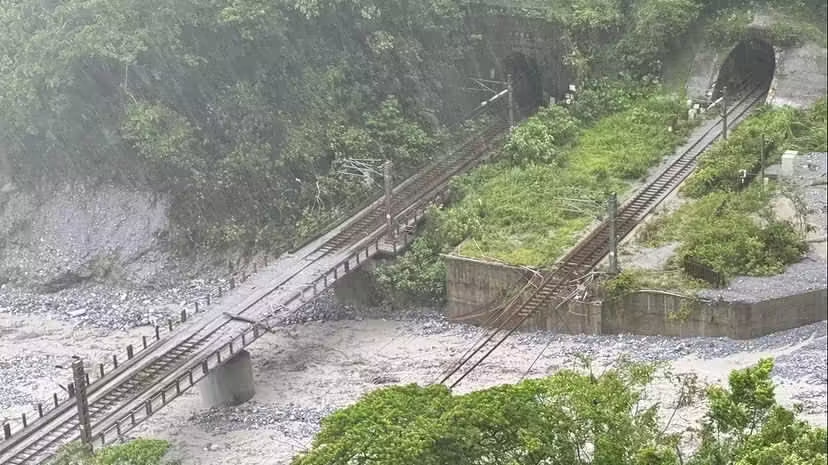
A TRB/TRA bridge was washed out between Yilan and Hualien.
There are many other photos and videos of the destruction online if you search for Typhoon Gaemi or 凱米颱風.
Safety Precautions During a Typhoon 颱風天安全措施
- Secure loose outside objects
- If you live on the first floor of a flood-prone area, move as many valuables and important objects to higher floors as possible.
- Park your car/scooter on high ground
- Avoid going outside for your safety
- Stay out of the mountains
- Stay away from the ocean
- Have enough dry food and water ready for three days (72 hours) in case water and electricity are cut off.
If you follow the above rules, most Typhoons in Taiwan will not be dangerous. Also, most buildings in Taiwan are built with reinforced concrete that can withstand even the strongest winds, so stay indoors and you will be fine.
Conclusion 結論
Nature is incredible. Ultimately nature is in control, but we can do our best to reduce risk and improve safety by following the precautions above.
For more Typhoon history, check out our full 2024 Taiwan Typhoon Season post here.
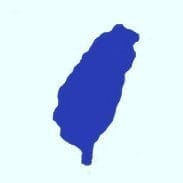
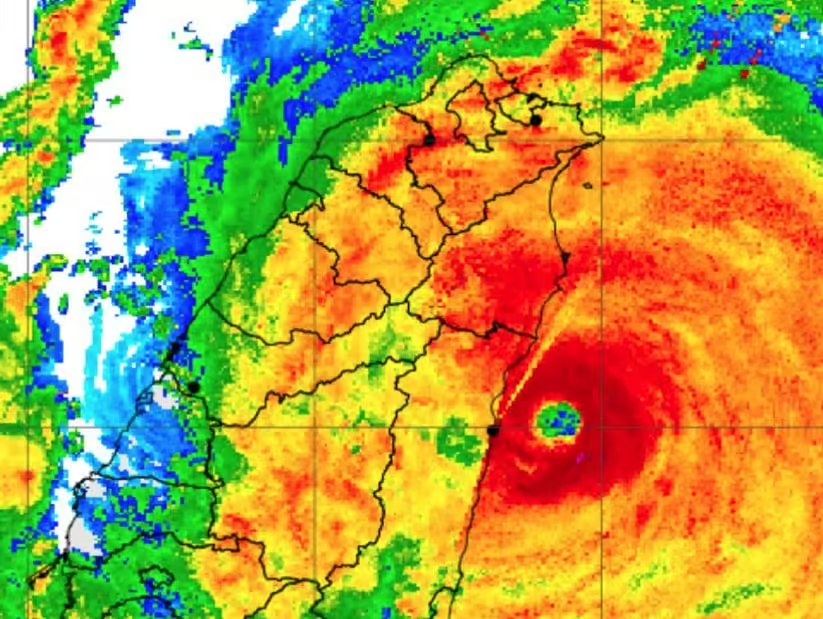
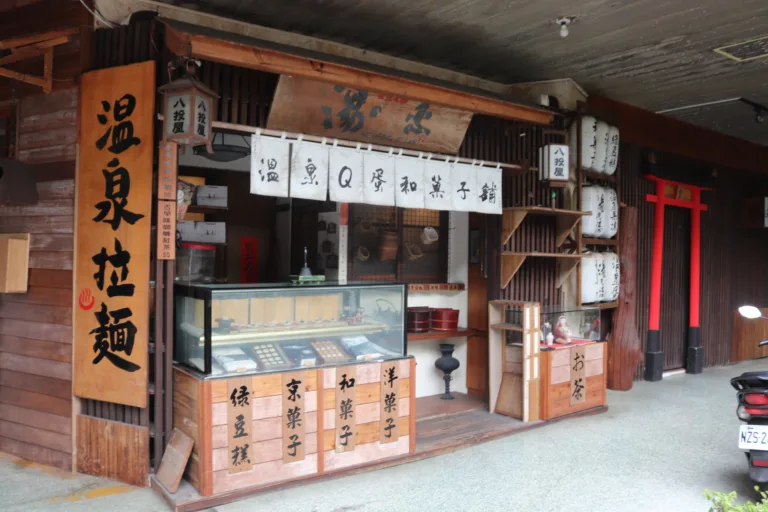





This is the best overview I’ve seen. Thanks